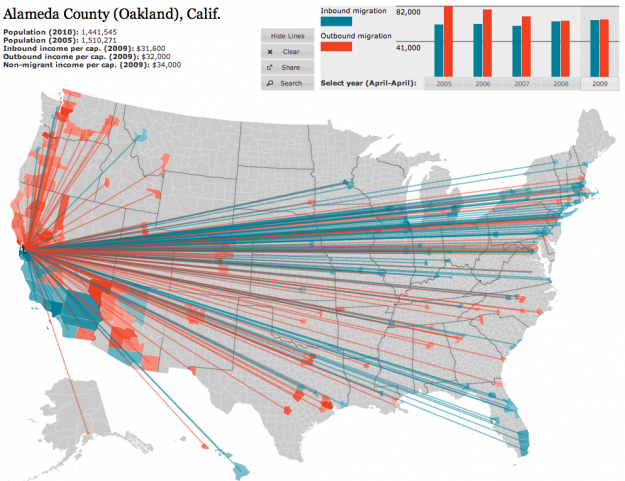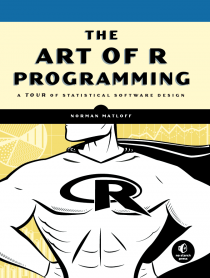FlowingData - American migration map |  |
| Posted: 17 Nov 2011 12:31 AM PST Overhauling his migration map from last year, Jon Bruner uses five year's worth of IRS data to map county migration in America:
Compared to last year's map, this one is much improved. The colors are more subtle and more meaningful, and you can turn off the lines so that it's easier to see highlighted counties when the selected county had a lot of traffic during a selected year. Speaking of which, you can see map the data for 2005 through 2009 via the simple bar graphs in the top right. |
| Book: The Art of R Programming Posted: 16 Nov 2011 12:06 AM PST
Norman Matloff's Art of R Programming is for those who want to learn to write their own software in R. This is an R programming book that starts from the beginning — running R, vectors, lists — to the more advanced such as simulations, object-oriented programming, and debugging. As the back cover says, no statistical knowledge is required to learn from this book, because it really is a book about programming written by a computer science professor (although Matloff is a former professor of statistics). The technical reviewer and an active member of the R community, Hadley Wickham no doubt provided additional depth to the text. There are lots of examples and explanations to go along with the code. The graphics chapter is relatively basic, explaining how to produce a few plots, so you won't get a ton out of this part other than a foundation to look into other resources. If you really want to learn the nuts and bolts of graphics in R, Paul Murrell's R Graphics is a good choice (but kind of pricey). And of course Visualize This for more high-level material. I only mention this though because this is a visualization blog — not because I was expecting more about graphics in Art of R Programming. Here's who Matloff says the book is for:
That's about right. If you've never written a line of code, you might find some of the concepts challenging, but if you have at least a vague idea of what programming is, you should find Art of R useful. I'm keeping this one. An open-source, "rough and partial" draft of the book can be found here [pdf]. The draft has a lot of the same ideas so you can get a good idea for what Art of R Programming is about, although from a quick scan, the final is more polished and contains more material. |
| You are subscribed to email updates from FlowingData To stop receiving these emails, you may unsubscribe now. | Email delivery powered by Google |
| Google Inc., 20 West Kinzie, Chicago IL USA 60610 | |



No comments:
Post a Comment